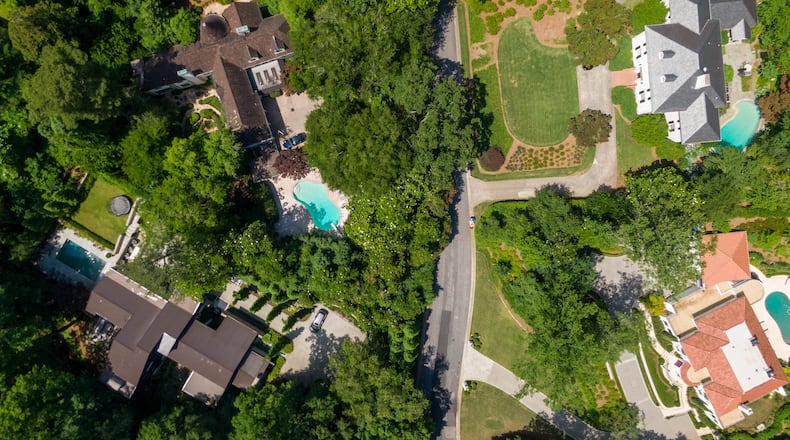Debates over proposed zoning changes in the city of Atlanta are set to intensify over the next several months as neighborhoods and the City Council weigh in on the ideas.
A series of three ordinances introduced this month by Councilman Amir Farokhi would allow a wider variety of housing to be built in traditionally single-family neighborhoods, especially around transit, helping the city keep up with its rising population, supporters say. Opponents worry the changes are too broad and could negatively impact the identity of Atlanta’s historic neighborhoods.
The proposals, made up of three main components, are set to go to every Neighborhood Planning Unit in the next several weeks. They could be changed before the council considers them this fall.
Credit: Atlanta Journal-Constitution
Credit: Atlanta Journal-Constitution
More accessory dwelling units
The city currently allows “accessory dwelling units,” known as ADUs, to be built behind residential homes in much of the city. Also know as in-law apartments or carriage houses, the plan expands the types of ADUs that can be constructed and the areas where they can be built.
It would allow ADUs to be connected to the main home, like a basement apartment of garage conversion. It would also increase the maximum height for detached ADUs.
It would permit the sale of detached ADUs though a configuration currently used for duplexes. According to the city, this would not formally subdivide the lot, but would allows for the units to have separate owners.
ADUs would still not be allowed in the R1-R3 residential districts, which have larger minimum lot sizes and are located mostly in Buckhead and southwest Atlanta.
Allowing more small apartment buildings
Perhaps the component of the plan that has drawn the most criticism from some neighborhood groups would rezone thousands of properties from single-family residential to a designation known as “multi-family residential, multi unit.” The properties are all located within a half-mile walk of a MARTA station and would be allowed to include up to four units instead of one. (They can build up to 12 apartments if they include affordable units.)
Opponents say the idea could work in some neighborhoods, but worry development could lead to drastic changes in historic neighborhoods like Ansley Park and Candler Park. Supporters say small apartment buildings fit in well in single-family neighborhoods and increase the diversity of housing in Atlanta. The multi-unit buildings could be up to three stories.
Parking minimums
The plan would also eliminate all city-imposed parking requirements for most of the city’s residential areas. That means the city would no longer mandate that builders include off-street parking for most houses or apartment complexes. The city says parking minimums increase housing costs, and it’s unnecessary for the government to require it.
Some worry this could create dangerous conditions on already busy streets. The city contends that parking will still be built in many residential developments, but it will be driven by market demands rather than the city code.
What would the proposals not do?
These ordinances wouldn’t eliminate single-family zoning in Atlanta, though that idea was initially proposed in a city-issued report late last year.
Officials suggested the city end exclusionary single-family zoning by allowing any residential property to add an extra unit if the owner wanted to. But the proposal to allow ADUs throughout the city got pushback from many residents in the R1-R3 residential districts, and officials scaled back the proposal.
A current draft of the city’s Comprehensive Development Plan, a document the city updates every five years to guide future development, includes some more far-reaching zoning suggestions, like reducing minimum lot sizes for single-family homes. That idea has also received criticism, and is separate from the ordinances currently being considered.
Department of City Planning Commissioner Tim Keane said the CDP could be revised before it is adopted later this year based on public feedback.
About the Author
The Latest
Featured




